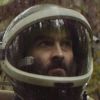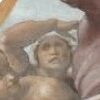10 Aesthetics Books That Shape Expert Understanding
Recommended by Jason Fried (Basecamp co-founder), Jay Duplass (filmmaker), and Sherri Irvin (philosophy professor) for deep insights into Aesthetics




What if the way you see art could change everything? Aesthetics is not just about beauty—it's a gateway into culture, philosophy, and emotion. Right now, as visual culture floods our daily lives, understanding aesthetics helps us navigate the subtle messages art conveys and how it shapes our experience.
Jason Fried, co-founder of Basecamp, embraces In Praise of Shadows for its quiet meditation on light and ambiance, revealing beauty in subtlety rather than brightness. Jay Duplass, filmmaker and actor, finds Ways of Seeing essential for decoding how images influence culture and power. Philosopher Sherri Irvin recommends Introducing Aesthetics and the Philosophy of Art for its clear take on complex philosophical debates that challenge established ideas about beauty and taste.
While these expert-curated books provide proven frameworks, readers seeking content tailored to their specific artistic interests, cultural contexts, or philosophical curiosities might consider creating a personalized Aesthetics book that builds on these insights for a uniquely relevant learning experience.
Recommended by Booklist
“[An] innovative reevaluation... Brilliantly conceived and handsomely designed, Karmel's fluent and creative history redefines abstraction in terms of its vibrant and evocative range of styles, subjects, and expression.”
by Pepe Karmel··You?
by Pepe Karmel··You?
When Pepe Karmel first discovered the global threads weaving through abstract art, he challenged the Eurocentric narratives that dominate the field. This book unpacks abstract art through five thematic lenses—body, landscape, cosmology, architecture, and man-made signs—demonstrating how artists worldwide, from Joan Miró to Wu Guanzhong, embed cultural and spiritual meanings into abstraction. You'll learn to see abstract works not just as isolated expressions but as interconnected stories reflecting diverse social contexts. If you're intrigued by art history that breaks traditional boundaries and offers a richer, more inclusive perspective, this book offers detailed analyses and pairing of artworks that deepen your understanding beyond familiar names and styles.
Recommended by International Herald Tribune
“One of the most influential designers of the twentieth century . . . Munari has encouraged people to go beyond formal conventions and stereotypes by showing them how to widen their perceptual awareness.”
by Bruno Munari··You?
by Bruno Munari··You?
Unlike most design books that focus narrowly on aesthetics or function, Bruno Munari's Design as Art takes a broad, playful look at how design shapes everyday life. Drawing from his deep experience as an Italian artist and designer, Munari explores objects ranging from lamps to road signs, revealing their visual and functional roles. You’ll gain a nuanced understanding of visual, graphic, and industrial design principles, alongside fresh ways to perceive common objects. This book suits anyone curious about the intersection of art and practical design, especially those who want to rethink the ordinary through a creative lens.
This personalized book offers a tailored framework for exploring global perspectives and thematic analysis in abstract art. It provides a thorough examination of how diverse cultural contexts and artistic movements shape abstract expression worldwide. The book focuses on identifying recurring motifs and conceptual approaches across regions, allowing readers to understand abstract art's multifaceted nature through a customized lens. By cutting through irrelevant generalizations, it fits your specific artistic interests and analytical goals, delivering comparative methodologies that reveal both universal and localized themes. This tailored approach deepens insights into abstract art's cross-cultural dialogues and enriches your interpretative skills with adaptable thematic strategies.
Recommended by Wrath Of Gnon
Traditionalist and urbanism commentator
“@pvtrefact Maybe my second favorite book?” (from X)
by Jun'ichiro Tanizaki··You?
by Jun'ichiro Tanizaki··You?
When Jun'ichiro Tanizaki first explored the subtle interplay of light and shadow in traditional Japanese spaces, he crafted an intimate essay that goes beyond mere description to reveal aesthetic philosophy rooted in culture and history. You learn to appreciate nuanced contrasts, such as lacquerware glowing under candlelight or the delicate ambiance of dim interiors, which challenge Western ideas of brightness and clarity. This book suits anyone curious about how sensory environments shape experience, especially those interested in Japanese art, architecture, and cultural contrasts between tradition and modernity. Tanizaki’s reflections invite you to see beauty in quiet shadows rather than glaring illumination, a perspective that might reshape your own sense of design and atmosphere.
Recommended by Dylan Kenny
Literary critic, The Paris Review
“As dangerous and uncanny as she is intelligent, which is saying a great deal...”
by Vernon Lee, Dylan Kenny··You?
by Vernon Lee, Dylan Kenny··You?
Unlike most books on art and aesthetics that emphasize external critique, this one dives deeply into the internal psychological experience of encountering art. Vernon Lee, writing as Violet Paget, blends her rich background in philosophy and intimate familiarity with artistic circles to explore how mood and empathy shape our perception of artworks. You’ll find vivid accounts of her personal reactions to paintings and sculptures, alongside nuanced philosophical reflections that challenge you to reconsider how emotional states influence aesthetic appreciation. Chapters like those featuring her Gallery Diaries provide concrete examples of art’s impact on the psyche, making this a thoughtful read for those wanting to understand art beyond surface beauty. If you’re interested in the intersection of psychology and aesthetics, this book offers a unique, introspective perspective that goes beyond typical art criticism.
Recommended by Jimmy Wright
Artist, National Academician, Pastel Society President
“One way to really know someone’s true character is to visit a museum and look at art with them. With Carolyn Schlam’s The Joy of Art in hand, you will be led through a joyous discovery of art through the centuries as seen through the eyes and insights of an artist and educator who accumulatively reveals the literal and the mysterious building blocks that make art a viewing pleasure for the eyes and the soul.”
by Carolyn Schlam··You?
by Carolyn Schlam··You?
What if everything you knew about appreciating art was wrong? Carolyn Schlam challenges the typical approach by inviting you to see art through the eyes of a practicing artist rather than a historian. You learn a practical vocabulary to break down what you see, from brushstrokes to composition, and gain insight into the choices artists make, illuminated by 150 color photographs. This isn’t about memorizing art history dates but about truly connecting with art and communicating that connection. Whether you're a casual museum-goer or someone wanting to deepen your aesthetic sense, this book sharpens your ability to enjoy and discuss art meaningfully.
by TailoredRead AI·
This personalized book on design principles explores the intersection of aesthetics and function within everyday objects. It provides a tailored framework that integrates foundational design theories with practical applications, allowing you to analyze and apply concepts relevant to your specific industry or artistic focus. The content adjusts to emphasize how form influences usability and emotional response, offering a nuanced approach to visual harmony and utility. By focusing on the subtleties of material choices, ergonomics, and cultural context, the book cuts through irrelevant advice to fit your unique design challenges, equipping you to create objects that are both beautiful and purposeful.
Recommended by Sherri Irvin
Philosophy professor and social justice leader
“Darren Hudson Hick's Introduction to Aesthetics and the Philosophy of Art offers a fresh, engaging take on both central and historically neglected topics in aesthetics. Hick presents complex debates in an accessible way and brings thinkers from different traditions and historical moments seamlessly into conversation. Examples from a wide variety of art forms keep the discussion lively while drawing out the implications of the theories on offer.”
by Darren Hudson Hick··You?
by Darren Hudson Hick··You?
What if everything you knew about art and beauty was wrong? Darren Hudson Hick challenges conventional ideas about aesthetics by exploring whether objects like mass-produced plastic flamingos can truly be considered art. Drawing from his academic role at Texas Tech University, Hick guides you through thorny debates about taste, meaning, and artistic value using vivid examples from Duchamp's urinal to popular films. You’ll gain skills in critically assessing art beyond traditional boundaries, especially by engaging with the lively case studies that anchor each chapter. This book suits anyone curious about philosophy’s take on everyday aesthetics, not just specialists.
by Terry Barrett··You?
by Terry Barrett··You?
When Terry Barrett first reconsidered how art is defined and valued, he reshaped the conversation around contemporary aesthetics and criticism. Drawing from decades as a professor at The Ohio State University, Barrett explains why certain works qualify as art and challenges you to think beyond traditional categories. You’ll explore various forms such as abstract painting, performance art, and video installations, gaining tools to analyze and argue about art’s meaning and quality. This book suits students and anyone interested in understanding modern art’s complexities without getting lost in jargon or dogma.
by Jacques Rancière, Gabriel Rockhill··You?
by Jacques Rancière, Gabriel Rockhill··You?
What changed when Jacques Rancière first reexamined aesthetics was his challenge to its usual confinement as merely art's sensory dimension. Drawing from decades of teaching aesthetics and politics, Rancière explores how aesthetics fundamentally governs what society perceives and excludes—shaping the visible, audible, and thinkable realms. You gain insight into how art and politics intertwine through this lens, illustrated by historical references from the Greek polis to modern artistic revolutions, creating a framework that reshapes your understanding of political power and cultural expression. This book suits anyone curious about the deeper mechanics behind art's role in society, especially in political philosophy and cultural theory.
Recommended by Jay Duplass
Filmmaker and actor
“THE LOST LEONARDO doc is great Reminds me of the most influential book I read in College, John Berger's WAYS OF SEEING” (from X)
by John Berger··You?
by John Berger··You?
When John Berger first discovered how context shapes perception, he crafted Ways of Seeing to challenge traditional views of art and its interpretation. This book breaks down how images, especially in advertising and fine art, influence what you believe about culture and power. You'll learn to question visual assumptions and understand the social and political forces behind what you see. Chapters dissect everything from Renaissance paintings to modern photography, making it ideal if you're curious about art criticism or cultural studies. However, if you're looking for a purely historical or technical art guide, this philosophical approach might feel abstract.
by David Goldblatt, Lee B. Brown, Stephanie Patridge··You?
by David Goldblatt, Lee B. Brown, Stephanie Patridge··You?
David Goldblatt, Emeritus Professor of Philosophy at Denison University, brings his extensive expertise in aesthetics and philosophy to this thoughtfully curated anthology. You gain access to ninety-six carefully selected essays spanning traditional art forms like painting and music, as well as contemporary topics such as digital architecture and street art, offering a broad yet focused understanding of aesthetics. Chapters dedicated to specific art forms and thematic sections allow you to explore both foundational thinkers like Kant and cutting-edge issues like trans/gendered beauty, making it a versatile resource for anyone delving into the philosophy of the arts. This book suits students and enthusiasts ready to engage with diverse perspectives and deepen their grasp of aesthetic theory without getting lost in jargon or overly technical prose.
Get Your Personal Aesthetics Strategy in 10 Minutes ✨
Stop following generic advice. Get focused insights tailored to your art interests and goals.
Join 15,000+ Aesthetics enthusiasts who've personalized their approach
Conclusion
These 10 books weave together diverse threads—from global art history to the psychology of art perception, from design principles to political implications of aesthetics. If you're grappling with understanding contemporary art's challenges, Why Is That Art? will clarify modern debates. For rapid immersion into visual culture critique, pair Ways of Seeing with Design as Art to sharpen both your critical eye and creative thinking.
For those drawn to philosophical foundations, Aesthetics and Introducing Aesthetics and the Philosophy of Art offer rich perspectives to anchor your understanding. Once you've absorbed these expert insights, create a personalized Aesthetics book to bridge the gap between general principles and your specific situation, ensuring your journey through aesthetics is as impactful as possible.
No matter your path, these selections offer a solid compass for navigating the layered world of art and aesthetic experience, empowering you to see beyond the surface and engage with art in a profoundly informed way.
Frequently Asked Questions
I'm overwhelmed by choice – which book should I start with?
Start with Introducing Aesthetics and the Philosophy of Art for a clear, approachable entry into key ideas that will make other books more accessible.
Are these books too advanced for someone new to Aesthetics?
Not at all. Titles like The Joy of Art and Introducing Aesthetics and the Philosophy of Art welcome newcomers with engaging explanations and practical examples.
What's the best order to read these books?
Begin with introductory works, then explore thematic books like Abstract Art or The Politics of Aesthetics, and finish with critical analyses such as Ways of Seeing.
Do these books assume I already have experience in Aesthetics?
They vary. Some, like Why Is That Art?, presume some familiarity, while others like The Joy of Art are designed for broad audiences including beginners.
Which books focus more on theory vs. practical application?
Introducing Aesthetics and the Philosophy of Art and Aesthetics lean toward theory, while Design as Art and The Joy of Art emphasize practical understanding and appreciation.
Can personalized Aesthetics books complement these expert reads?
Yes! While these expert books offer deep insights, personalized books tailor content to your goals and interests, making learning more efficient and relevant. Explore personalized options here.
📚 Love this book list?
Help fellow book lovers discover great books, share this curated list with others!
Related Articles You May Like
Explore more curated book recommendations









